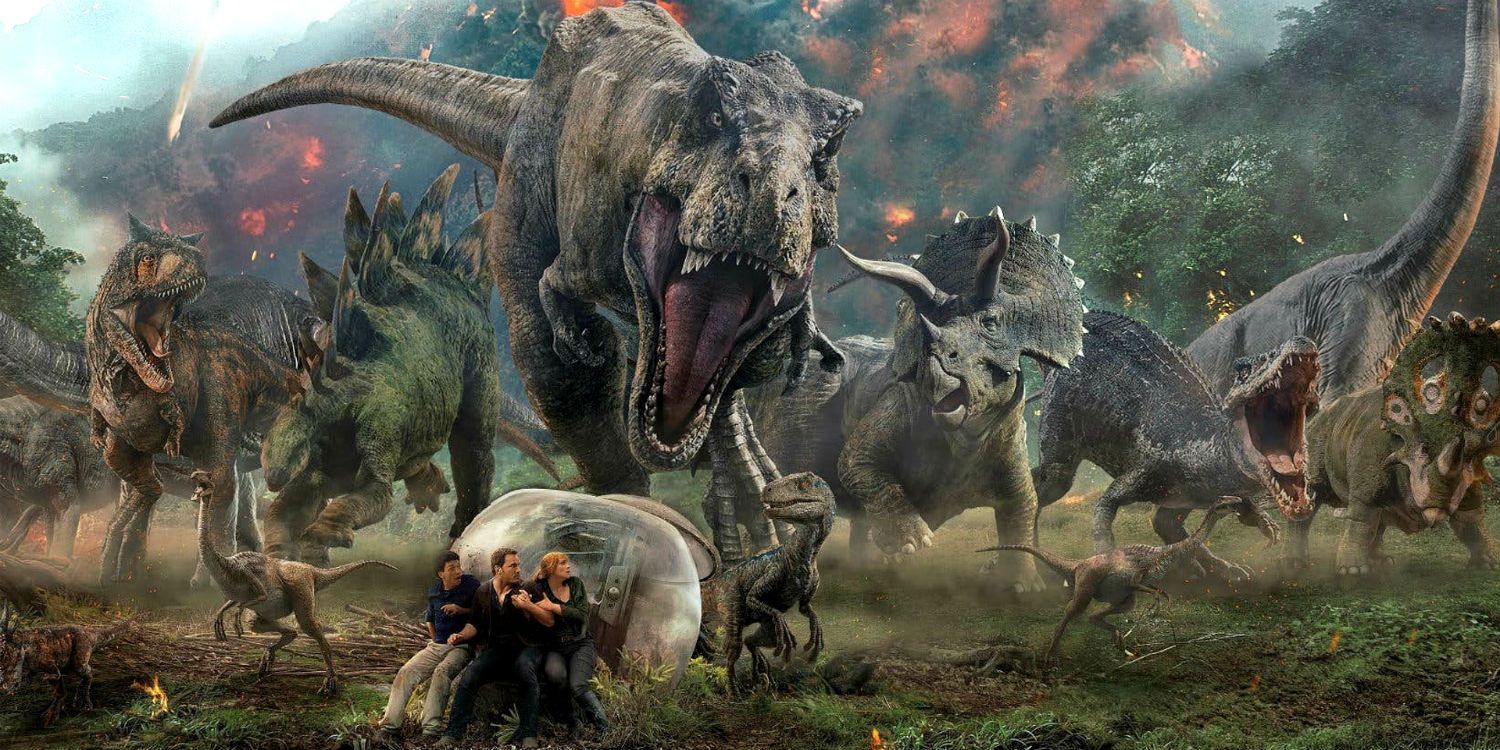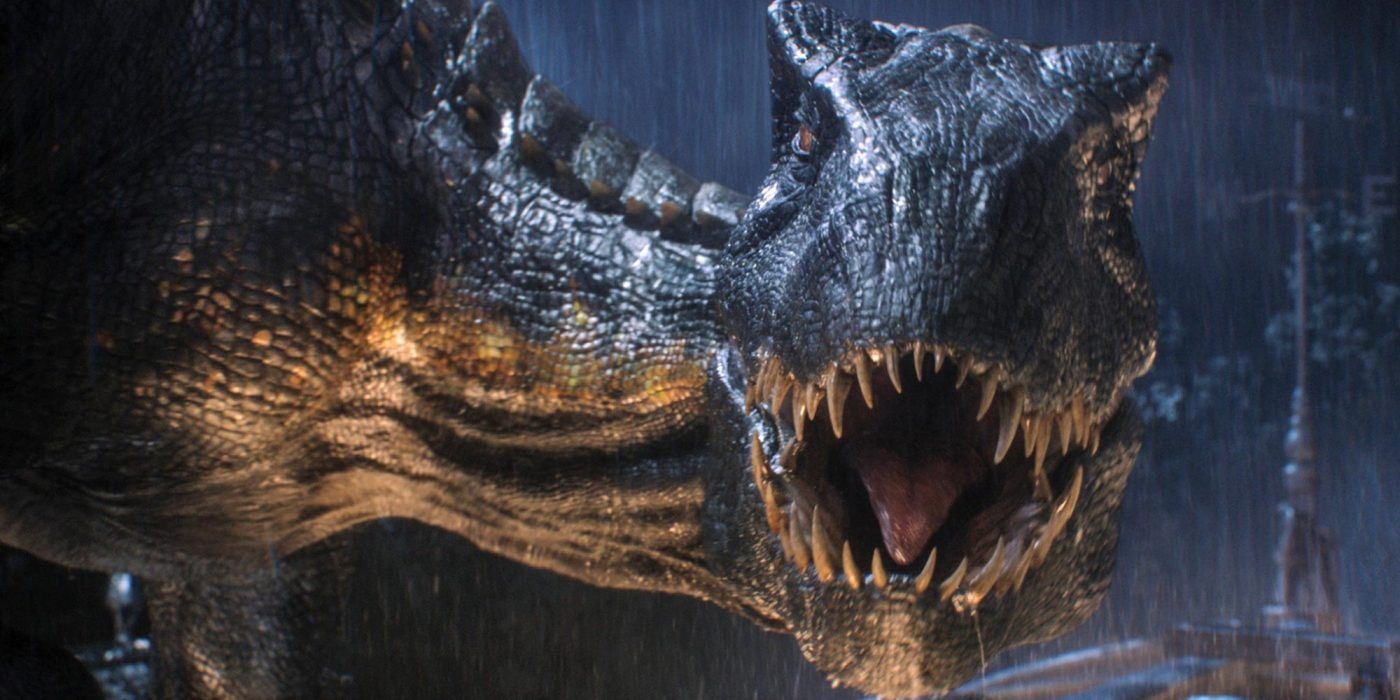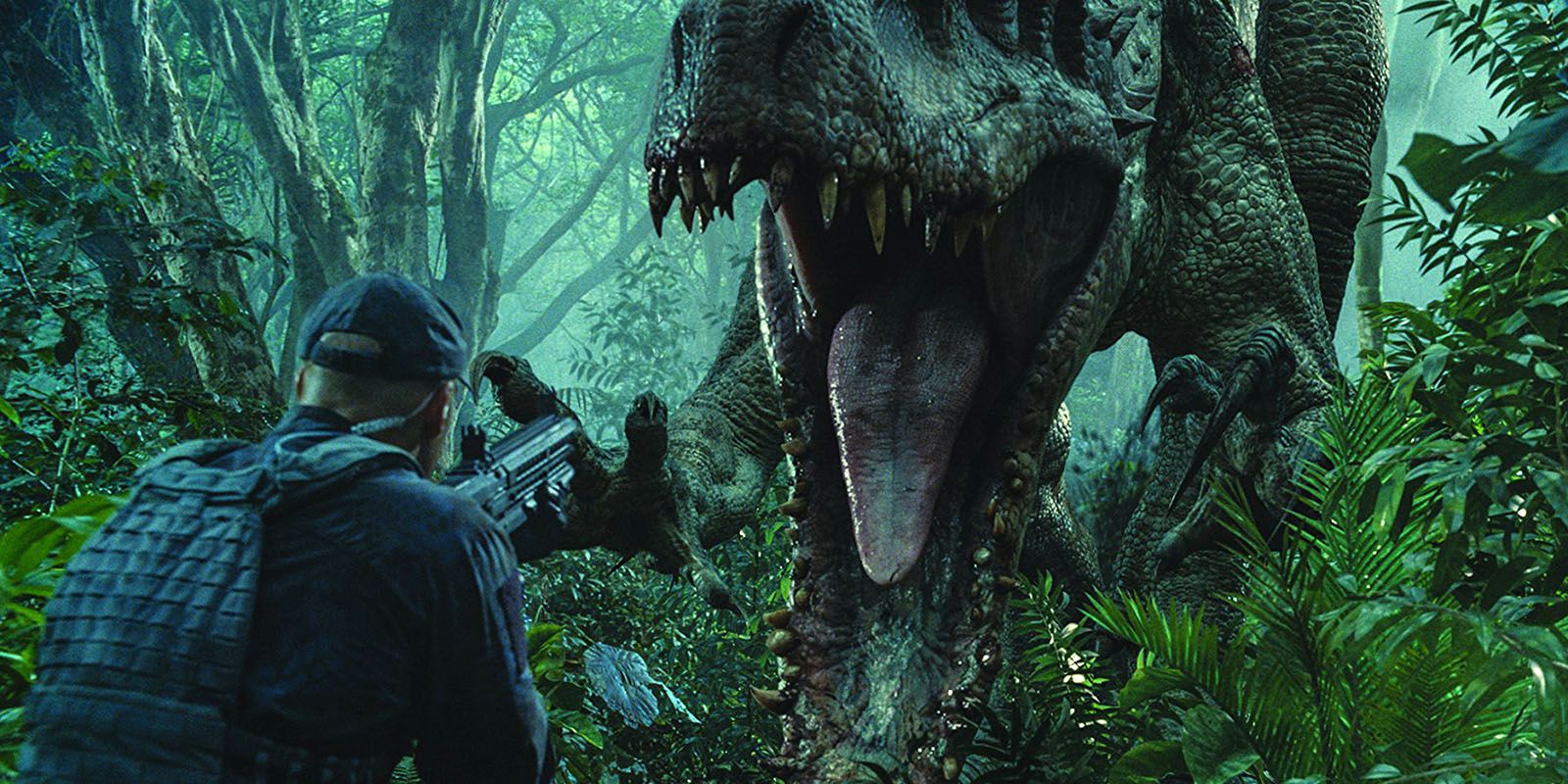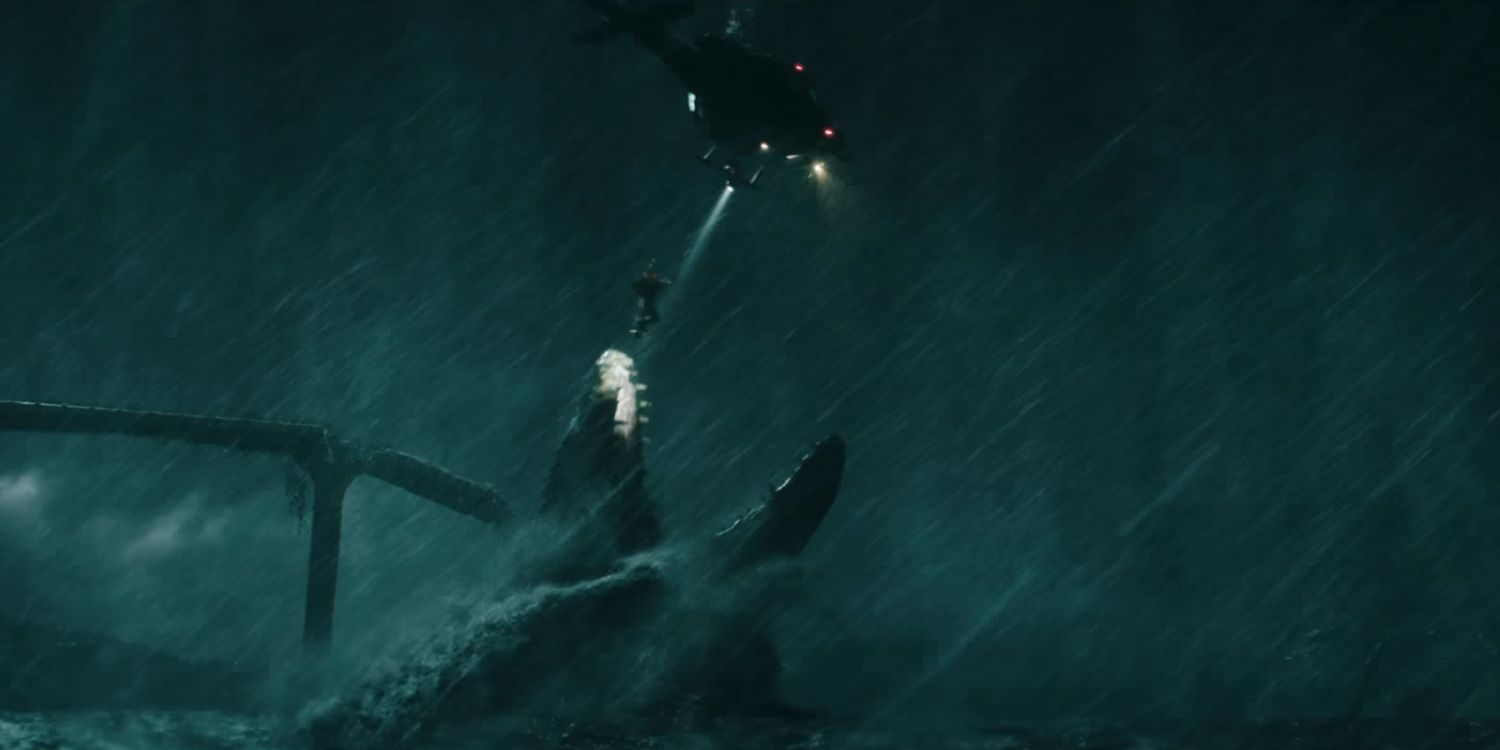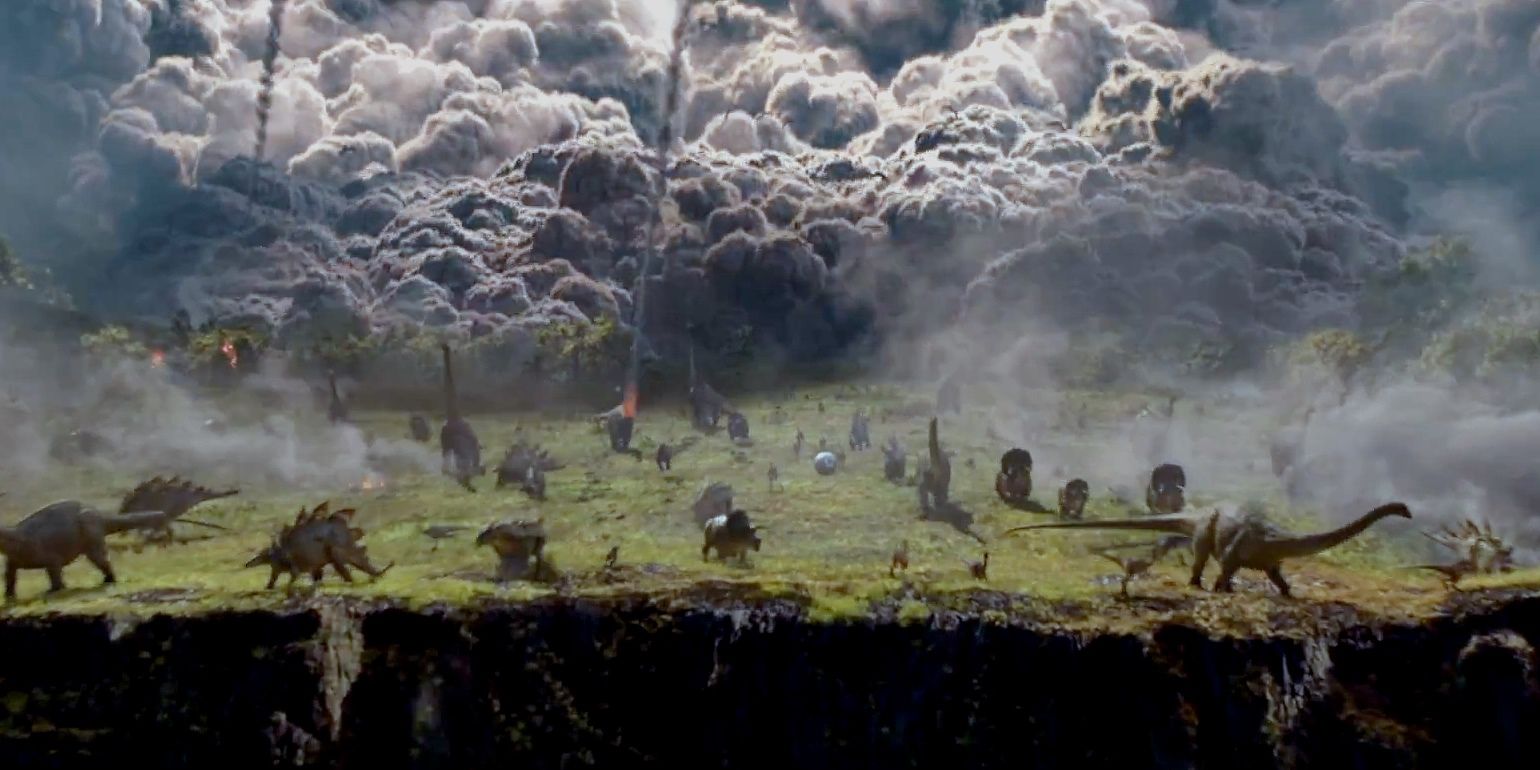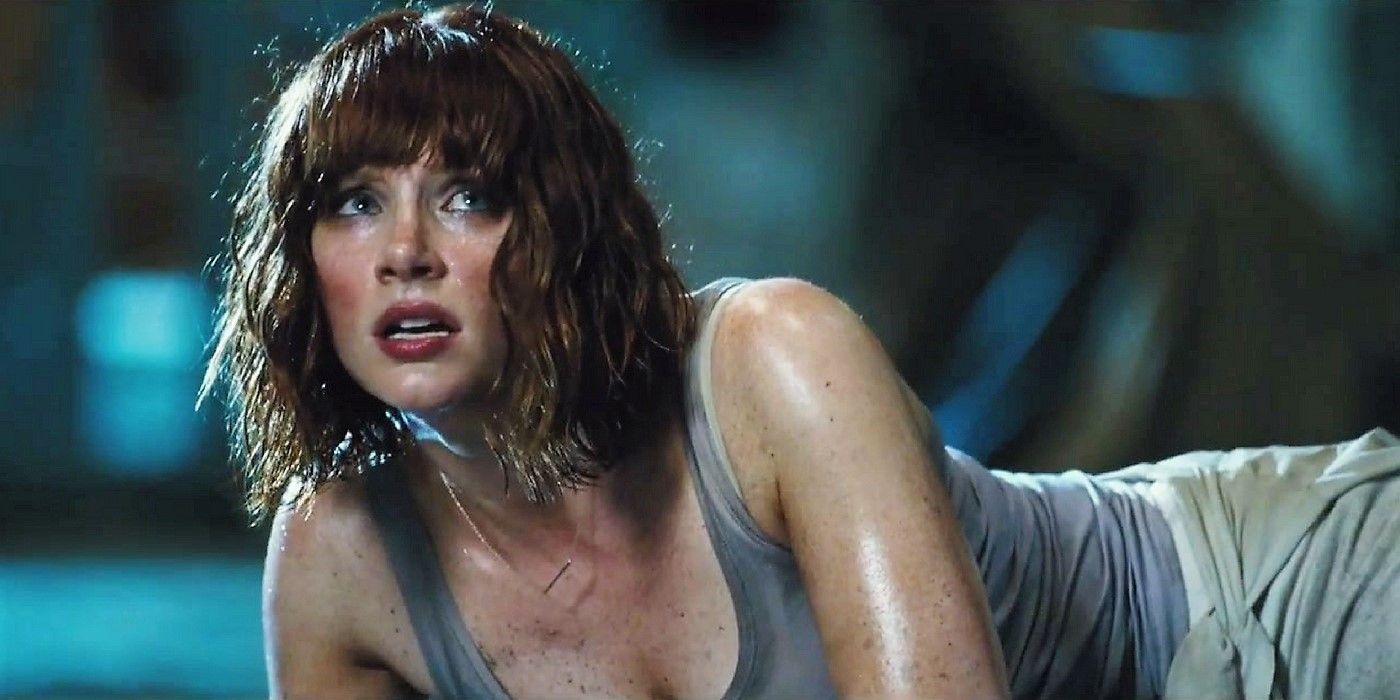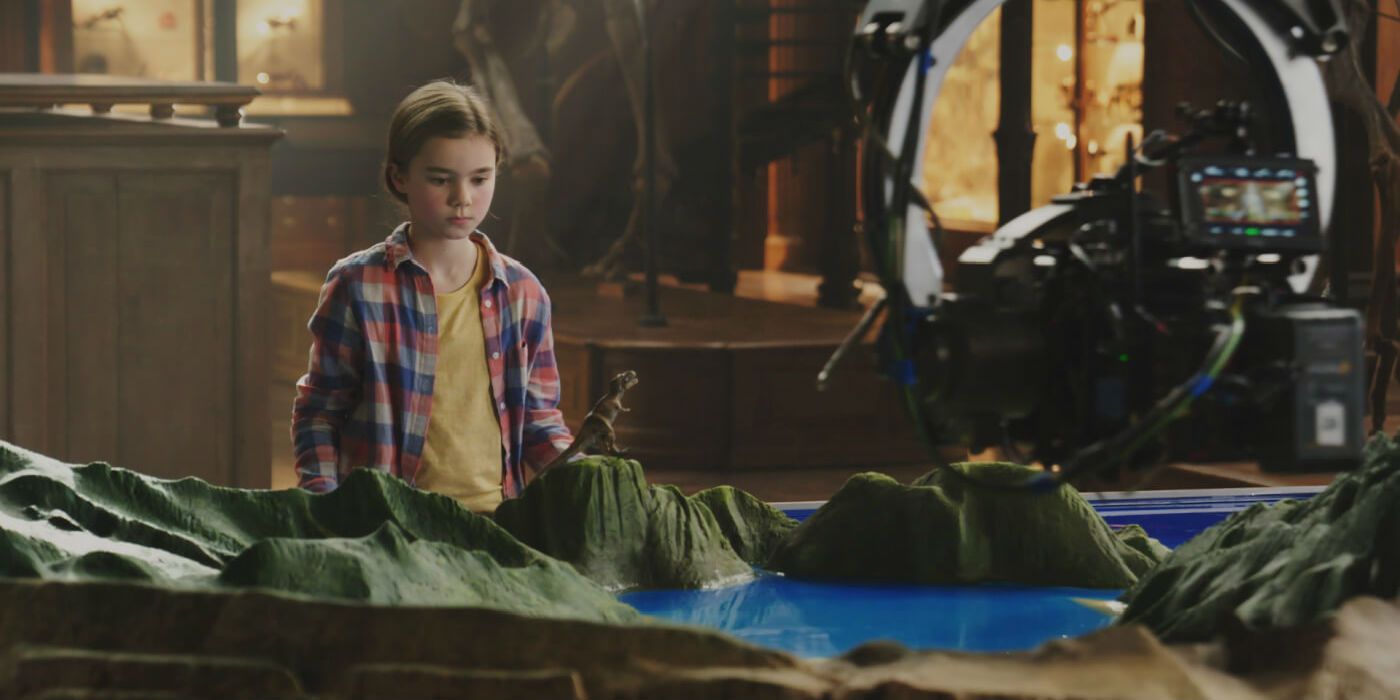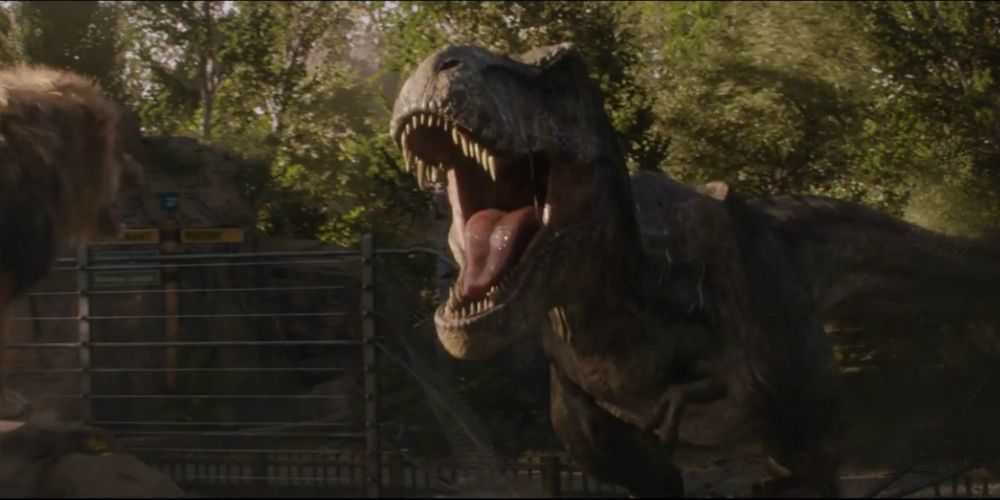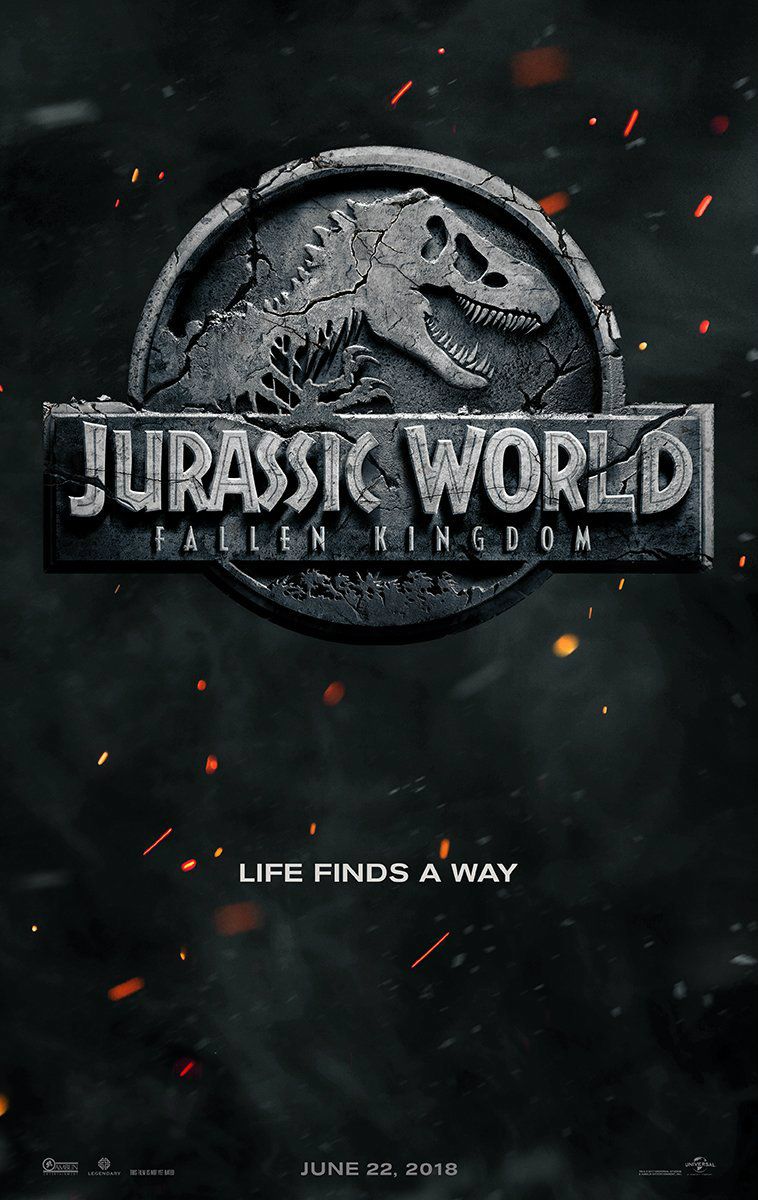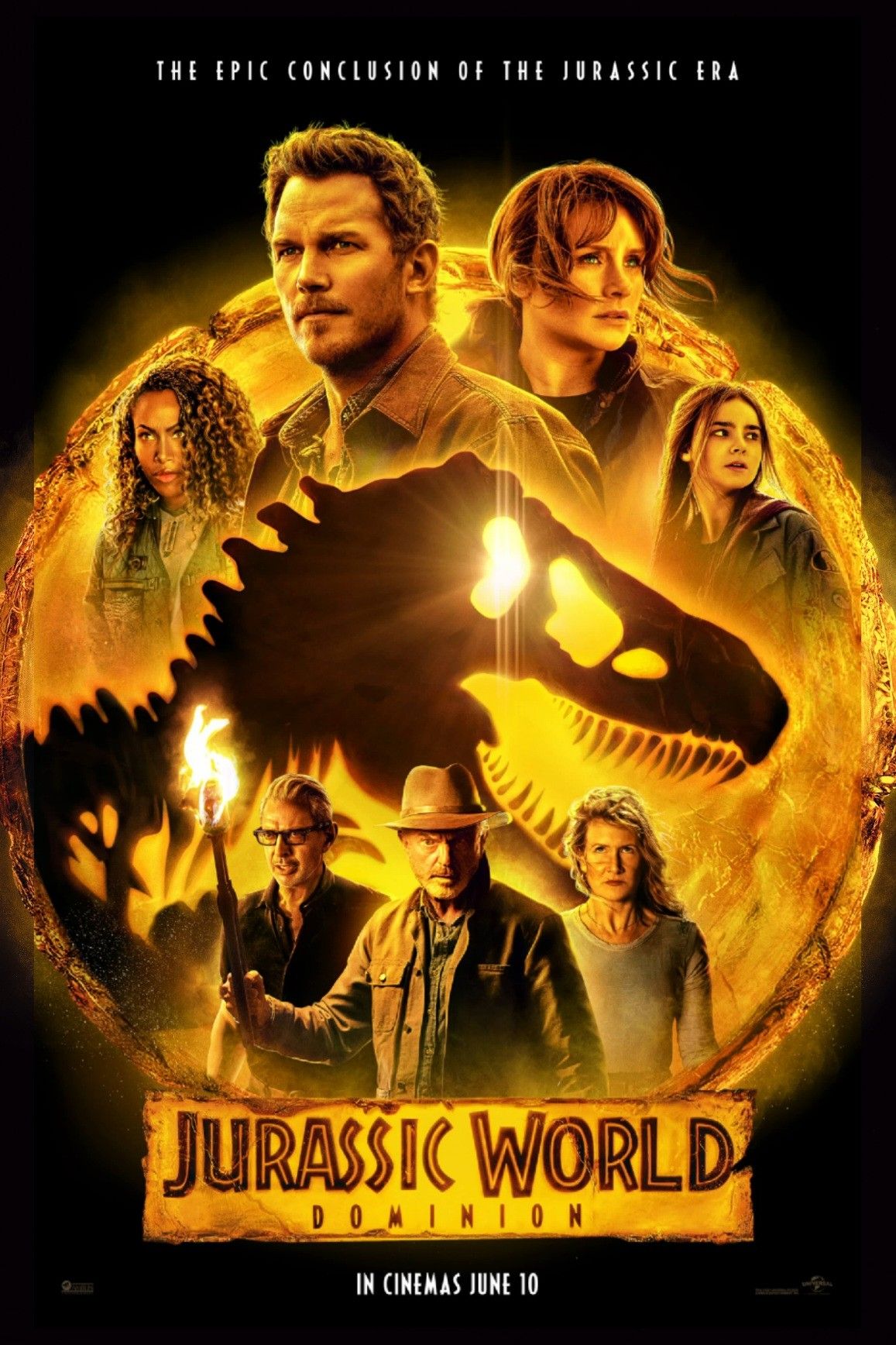Jurassic World: Fallen Kingdom contains some of the most remarkable, dino-sized plot holes in the entire franchise's history. A possible reason for this is because it's the middle part of the trilogy, and serves the essential purpose of getting viewers from A to B. There's a sense that Jurassic World director Colin Trevorrow had a strong vision for the first film, and he knew where he wanted the franchise to go for the end; but he hadn't really worked out how to connect the two. As a result, J.A. Bayona's sequel (which was co-written by Trevorrow) has quite a muddled, inconsistent script, with a plot that tries to switch genres halfway through.
There are also plot holes. Some of them are traditional issues in an action flick; the fact a boat gets from Costa Rica to California overnight is just the latest example of how fluid time can be in a movie. Others can be explained, even if they are slightly amusing (Jurassic World: Fallen Kingdom actually subtly contradicts itself with the origin of the Indoraptor). But some of these plot holes are simply inexplicable. You can see what the film is trying to do, but it just doesn't quite manage to pull it off.
Related: The Biggest Unanswered Questions From Jurassic World: Fallen Kingdom
So, here are the biggest plot holes we've spotted in Jurassic World: Fallen Kingdom. Where we can, we'll offer explanations in order to resolve them - but, as noted, not all of these issues can be fixed.
- This Page: Indoraptor Technicalities and the Opening Scenes
- Page 2: Human Cloning, the Dramatic End Montage, and More
The Indoraptor's Laser Targeting System Makes No Sense
One of the main "selling points" for the Indoraptor in the auction is that it can essentially be programmed to attack anybody you want. All you need is the right gun with a laser sight: you point it at the target, and then trigger the attack with a sonic cue. While this is impressive, and plays an important part in the film's climax, it also doesn't make any sense at all. Eli Mills is trying to sell the Indoraptor as a brutal assassin. Yet in order to ensure the Indoraptor kills the target of your choice, you have to be standing there in front of them, pointing a gun directly at their chest, and then triggering the sonic cue. That's not an assassination - it's simply the most expensive form of execution in history. While no doubt some of the people at the auction would indeed be interested in that, that's not how the Indoraptor is advertised.
The Indominus Rex's Skeleton
The opening sequence of Jurassic World: Fallen Kingdom reveals that, in order to create the Indoraptor, Mills and Wu sent an expedition to Isla Nublar. This team's mission is to obtain a genetic sample from the skeleton of the Indominus rex, which we last saw being consumed by the Mosasaurus in Jurassic World. And that leads to the most surreal scene in the entire film: Mills' agents dive to the bottom of the Mosasaurus's tank, and find the perfectly-preserved skeleton of the Indominus rex.
It seems that the Mosasaurus is a very careful eater. Not only does it not break the bones of any creature it eats; when it's finished eating, it apparently has an obsessive compulsion to reassemble the skeleton, and carefully deposit it at the bottom of the lagoon. Perhaps the Mosasaurus likes swimming past and remembering its most enjoyable previous snacks.
Just When Did That Opening Scene Happen?
There's another awkward problem with that opening scene, as well: just when is it set? Given that DNA sample was needed to create the Indoraptor in the first place, and a dinosaur clone's gestation in this franchise has always taken over 12 months, we can assume it was at least a year ago. More likely, it was shortly after Isla Nublar was abandoned. And yet Mills' team seem to believe enough time has passed for the dinosaurs to actually die out. They're surprised to be confronted by a Tyrannosaurus rex and a Mosasaurus.
Adding to the oddity of it all, the Mosasaurus is presumably released into the wild at least a year before the main plot of Jurassic World: Fallen Kingdom. So what happens to the aquatic dinosaur in all that time? It seems to just swim through the depths, not troubling anyone until the end of the film, when it chooses to snack on some surfers.
Page 2: Human Cloning, the Dramatic End Montage, and More
Volcanoes Just Don't Work Like That
Jurassic World: Fallen Kingdom is like no other volcano movie ever made. On the one hand, the visuals are absolutely perfect. This is a volcano that has been dormant for an unknown amount of time, but has finally rumbled to life; the longer the period of dormancy, the more explosive the eruption when the volcano erupts. And make no mistake, this is an explosive eruption - when the volcano clears its throat, you get a scattering of volcanic bombs. Then, pyroclastic flows sweep down the slopes of the mountain, as in the image above. Visually, this film couldn't be more scientifically accurate.
Unfortunately, the script isn't quite as accurate as the visuals. Take that stunning pyroclastic flow as the classic example; a pyroclastic flow is a swirling cloud of gas and ash, and can travel at up to 700 km/h - and yet Owen comes close to outrunning it. When the pyroclastic flow eventually catches up with him, he's briefly obscured by it - and yet manages to dive into the water. The problem is that a pyroclastic flow's temperature is in excess of 1,800 degrees Farenheit. The skin should have been seared from his bones. Not to mention, a moment's exposure to that should have led to asphyxiation, as scalding hot toxic gases burned his lungs.
Related: Jurassic World: Fallen Kingdom's Most Brutal Reviews
Locked In - But With Another Way Out
Now let's look at another problematic scene during that whole "volcanic eruption" part of the film's plot. Mills's agents trap Claire and Franklin in one of the old Park bases on Isla Nublar, and they spend quite a bit of time trying to work out how to exit... Until a lava flow drives a carnivorous dinosaur into the building. That's when they suddenly notice an escape hatch in the roof. So why didn't they just climb the ladder and exit that way in the first place?
The Human Cloning Problem
The biggest twist in Jurassic World: Fallen Kingdom is nothing to do with the dinosaurs at all. Rather, we learn that Lockwood perfected human cloning, and that his "granddaughter" Maisie is actually a clone. It seems this is why we've never heard of Lockwood before; he and John Hammond parted ways years ago, disagreeing over the idea of human cloning. Hammond was fine with creating dinosaurs, but trying to reverse death?
It's a smart retcon, and at first glance it makes a measure of sense. Unfortunately, though, it doesn't hold up to scrutiny. Jurassic World established that, in-universe, John Hammond died in 1997 - 20 years ago. That means the disagreement between Hammond and Lockwood happened even further back than that, but Maisie most definitely isn't 20 years old.
At least there's a potential explanation for this one. Presumably Lockwood came up with the idea of human cloning back when Hammond was still alive, but it took him years to perfect the technology.
Related: Jurassic World 2 Completely Retcons The Original Jurassic Park
The Ending Just Doesn't Work
And that brings us to the final plot hole: the film's entire end montage. The liberation of the captive dinosaurs is clearly intended to be the beginning of a sort of "Dinopocalypse," with man now having to share the world with dinosaurs. Unfortunately, the script just doesn't support that. Eli Mills only managed to rescue 11 different species, and some of them - the Ankylosaurus, the Tyrannosaurus Rex, and even poor Blue - are the last of their kind. We don't know how many individual animals were taken, but they were all carried on a single ship. There were so few of the creatures, that they could all be held in pens in the basement of the Lockwood Estate. There are 27 security feeds monitoring those cages - presumably meaning there are only 27 cages in the first place. You're probably talking not more than 40 or 50 dinosaurs escaping into the wild, and many of them would be unable to reproduce (except through cloning) because they're the last of their kind.
Making this even more awkward, Jurassic World: Fallen Kingdom already revealed that every single dinosaur in the Park had a tracker implanted within its skin. All the authorities need to do in order to round up these creatures is capture one of them, and identify the frequency those trackers are operating at. Those roaming dinosaurs will no doubt cause a lot of problems in the short term, but we're a long way away from creating the promised "Jurassic World."

